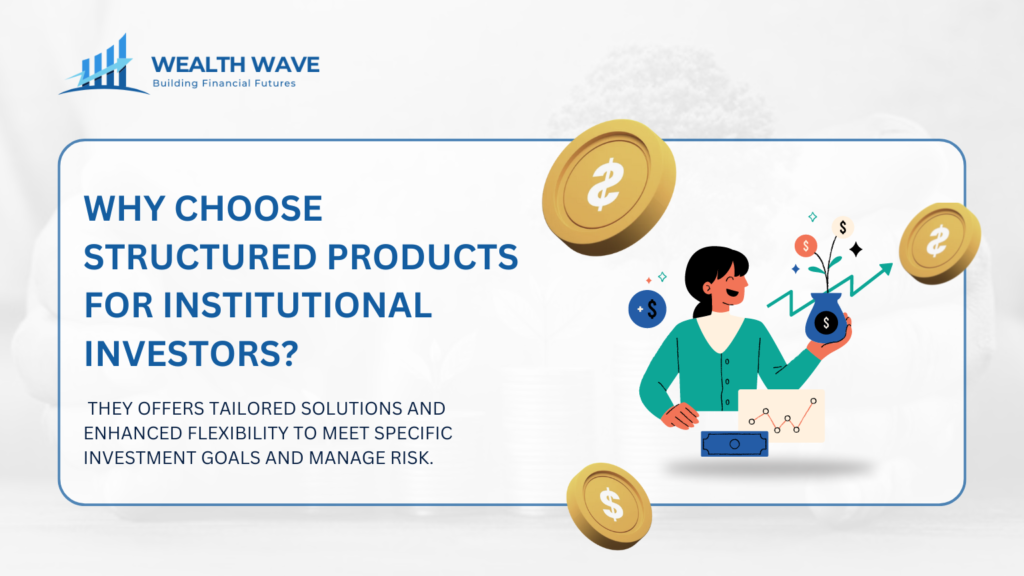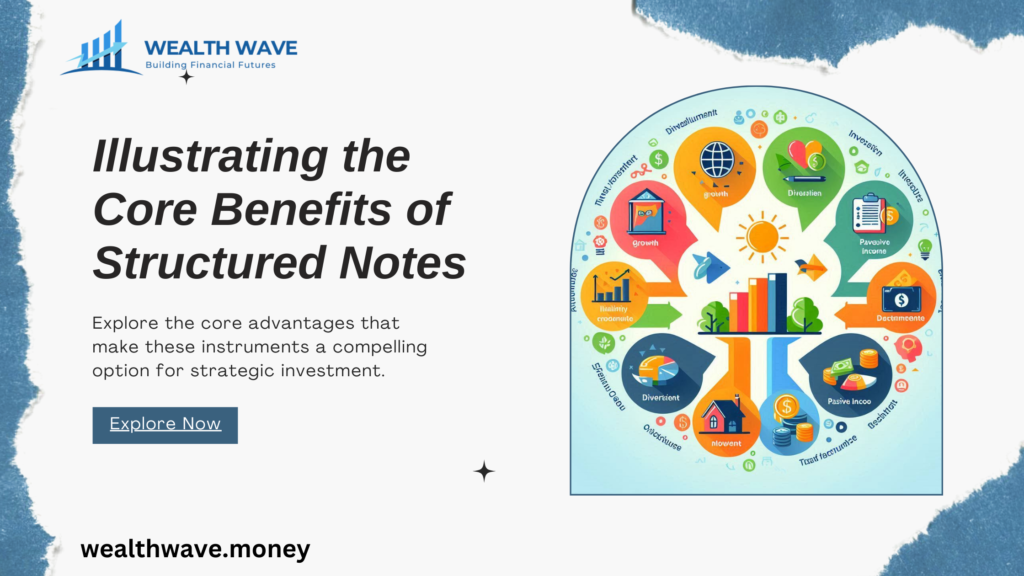
Navigating the investment landscape can feel like a daunting journey, especially when you’re an institutional investor trying to stretch every dollar. Trust us, we’ve navigated these waters too.
After diving deep into research, we discovered that structured products could be the beacon of hope we were all searching for. These aren’t your run-of-the-mill investments; they bring together underlying assets with derivative components to help achieve those lofty investment goals.
In this blog post, let’s unpack how structured products provide tailor-made investment options for institutional investors looking for that sweet spot of higher returns and managed risk.
We’re talking everything from equity-linked notes to capital-protected investments – there’s a lot under this umbrella worth exploring. So stick around as we dive into how these intricate financial tools might just be the perfect addition to your portfolio strategy.
It promises to be an enlightening journey!
Key Takeaways
- Structured products provide customized investment solutions for institutional investors, linking returns to underlying assets like equities and interest rates. They offer diversification and potential for higher returns.
- These financial instruments come in various types, including participation, yield enhancement products, and capital protection products. Each caters to different risk profiles and investment strategies.
- Structured products for institutional investors offer flexibility by combining investment products like stocks, commodities, and currencies to achieve a positive return. These products are carefully put together by the issuer, providing tailored payoff structures and liquidity options. With the guidance of an advisor, they can be an essential part of wealth management, giving investors customized solutions with precise pricing and the potential for significant upside.
- Risk management is central to structured products with features like principal protection and downside protection aimed at safeguarding investment funds against significant losses.
- Understanding the risks involved is crucial. These risks include dependency on issuers’ creditworthiness among others, making careful selection essential for alignment with investment goals.
- Credit Suisse offers services tailored to institutional investors seeking structured product solutions that align with specific risk profiles and return requirements, enhancing portfolio allocation while mitigating risks.
Benefits of Structured Products for Institutional Investors

Structured products offer customized investment solutions that fit the specific needs of institutional investors. These financial instruments provide diversification opportunities and potentially higher returns, making them attractive options for sophisticated portfolios.
Customized Investment Solutions

We create customized investment solutions through structured products tailored to specific risk profiles and return requirements. These financial instruments link directly to the performance of an asset, such as equities, indices, or interest rates.
Our structured notes with principal protection cater to institutional investors who prefer buy-and-hold strategies. They allow us to optimize portfolio allocation while addressing unique market expectations.
Offering a variety of types of structured notes, including market-linked growth notes and income notes, we respond to different investment needs. Each product provides potential returns based on asset performance, ensuring we meet diverse client objectives.
This approach enhances our risk management strategies and promotes effective portfolio diversification. Next, we will explore the various types of structured products available to us.
Diversification Opportunities

Structured products provide valuable diversification opportunities for institutional investors. They allow us to balance our portfolios across various asset classes and risk profiles.
We can link these products to equities, indices, funds, or interest rates. This connection helps us optimize our portfolio allocation. By incorporating structured products, we reduce the correlation among our investments.
This strategy can lead to enhanced risk-adjusted returns.
Structured products also offer specialized investment solutions like market-linked growth notes and market-linked income notes. These options enable us to capture different market scenarios.
We can structure our investments based on specific return requirements. Furthermore, structured products can help mitigate the risks associated with traditional investments. By understanding their unique characteristics, we position ourselves to maximize our investment potential effectively.
Potential for Higher Returns

Structured products offer opportunities for higher returns by linking investment performance to underlying assets. These assets can include equities, indices, funds, or interest rates.
Investors can benefit from market-linked growth notes and market-linked income notes, which are common types of structured products. Investing in these products allows us to aim for better performance than traditional buy-and-hold investments.
Principal-protected notes also play a crucial role in enhancing returns. They provide downside protection while still offering the potential for appreciation based on the performance of an asset.
As we explore structured products, we can optimize our portfolio allocation creatively and strategically.
Types of Structured Products

Structured products come in various forms, each serving distinct investment needs. We can explore options like participation products and yield enhancement offerings to meet our goals effectively.
Participation Products
Participation products offer institutional investors a chance to gain exposure to market performance without directly owning the underlying assets. These products link returns to the performance of specific securities, such as equities or indices.
We can benefit from the returns that depend on how well these assets perform.
Investing in participation products often aligns with our strategy for buy-and-hold investments. They can provide attractive returns based on market performance. These products come with varying levels of risk and serve to optimize our portfolio allocation.
Understanding the performance metrics helps us make informed choices in our institutional investing strategy.
Yield Enhancement Products
Yield enhancement products represent a critical choice for institutional investors. These structured products allow us to optimize returns and create income opportunities. They often link returns to the performance of underlying assets, such as equities or interest rates.
By using financial derivatives, we can create strategies that provide better yield compared to traditional investments.
Investing in yield enhancement products requires careful consideration. We need to understand the risks involved. These products rely on the issuers’ credit, similar to collateralized debt obligations and credit default swaps.
Knowledge of these risks helps us make informed investment decisions. Yield enhancement products can serve as effective solutions to improve our portfolio allocation and achieve specific financial goals.
Capital Protection Products
We shift our focus to capital protection products. These offerings ensure that we retain our initial investment. They are structured to act as buy-and-hold investments, making them appealing to institutional investors like us.
Capital protection products include principal protected notes. They provide returns based on the performance of assets such as equity, index, or interest rate. This means we gain exposure to market performance while safeguarding our principal amount.
Through asset-backed securities and hybrid securities, we appreciate the opportunity for growth without sacrificing safety. Understanding these solutions helps us navigate the investment landscape more effectively.
Risk Management with Structured Products

Risk management plays a crucial role in structured products for institutional investors. We can implement principal protection strategies to guard against significant losses. Downside protection helps us navigate uncertain market conditions effectively.
These features enhance our investment approach and increase our confidence. To explore the various risk management techniques available, we encourage you to read more.
Principal Protection
Structured products often include features like principal protection. This option secures the initial investment for institutional investors. We can invest in principal protected notes, which ensure we do not lose our invested capital, even if market performance wavers.
These products primarily serve as buy-and-hold investments. They tie our returns to the performance of underlying assets, such as equities or interest rates.
Furthermore, structured products allow us to optimize our portfolio allocation while minimizing downside risk. By understanding principal protection, we can make informed decisions about which structured products align with our investment goals.
Next, we will explore how structured products link underlying assets with derivatives.
Downside Protection
Downside protection plays a critical role in structured products. These products often include features that shield our investment from significant losses. For instance, principal-protected notes ensure we receive our initial investment even if the underlying asset’s value declines.
This safety net allows us to invest with greater confidence, knowing we have measures in place to limit potential losses.
Investing in structured products also allows us to take advantage of market fluctuations while mitigating risks. The downside protection we seek often comes from linking underlyings with derivatives.
This connection provides us with a way to maintain exposure to potential gains while protecting our principal investment. Through these strategies, we can optimize our portfolio allocation and manage risk effectively.
How Structured Products Work

Structured products link underlying assets with derivatives. These instruments can provide unique investment opportunities over a fixed term. They often generate returns based on performance, allowing for potential growth.
Understanding their mechanics is essential for making informed decisions. We encourage you to explore more about how these products function in the investment landscape.
Linking Underlying Assets with Derivatives
We link underlying assets with derivatives to create structured products. These products offer a return based on the performance of assets like equities or interest rates. By using derivatives, we can tailor our investments to specific risk profiles and return requirements.
This process allows us to invest in market-linked growth notes and capital protection products.
Our structured products, such as equity-linked notes and principal-protected notes, provide opportunities for institutional investors. These investments enable us to enhance our portfolio allocation and optimize our strategies.
With the right understanding, we can navigate the unique risks associated with structured products.
Indirect Investment with Fixed Term to Maturity
Structured products offer indirect investment options linked to various assets. They typically have a fixed term to maturity, allowing us to plan our investment horizon. These structures can include market-linked growth notes, equity-linked notes, or principal-protected notes.
Each product allows us to invest without directly owning the underlying asset. We align our investments with specific performance targets while managing risk. The fixed term ensures we know when to expect our returns.
Through structured products, we gain strategic solutions that optimize our portfolio allocation. They are primarily intended as buy-and-hold investments, making them suitable for institutional investors like us.
Considerations for Institutional Investors

When choosing structured products, we must understand the risks involved and select the right type for our investment goals. We invite you to explore how these investments can align with your strategies and objectives.
Understanding the Risks Involved
We recognize the risks associated with structured products. Investing in them is not the same as buying the underlying asset. These products depend on the issuers’ credit, similar to other forms of insurance.
Institutional investors must be aware of the potential for losses. While structured products include principal protected notes, they still carry risks. Understanding these factors is vital for successful investment.
We must take the time to analyze each product carefully. Structured products also act as buy-and-hold investments, which means they require long-term commitment. Knowledge of the performance metrics helps us make informed decisions.
Choosing the Right Type of Structured Product
Choosing the right type of structured product requires careful consideration. We must identify our specific risk profiles and return requirements. Three common types of structured products include market-linked growth notes, market-linked income notes, and market-linked CDs.
Each type serves different investment goals.
Institutional investors like us can use structured products to optimize portfolio allocation. These investments provide returns based on the performance of assets such as equity or interest rates.
We should evaluate options like equity-linked notes or principal-protected notes to meet our strategic needs. Understanding the unique features of each structured product plays a crucial role in making informed investment decisions.
Services and Solutions Offered by Credit Suisse for Institutional Investors
Credit Suisse provides various services and solutions for institutional investors. We offer structured products that cater specifically to their needs. Our offerings include equity-linked notes and principal-protected notes.
These products allow us to create highly targeted investments based on specific risk profiles and return requirements.
Our structured products act as buy-and-hold investments, allowing institutions to optimize portfolio allocation. Investing in these products helps mitigate risks while enhancing potential returns.
By relying on the issuers’ credit, we ensure a strategic approach. We focus on asset-backed securities, delivering tailored solutions that align with market expectations.
Conclusion

Structured products present a versatile investment tool for institutional investors, providing tailored solutions that align with specific financial objectives and market conditions. Their design allows for customization in returns and risk management, addressing the diverse needs of sophisticated portfolios.
By leveraging the expertise of financial advisors, institutional investors can integrate structured products effectively into their strategies, enhancing potential returns while managing risk. These products offer a valuable addition to wealth management, helping investors navigate complex financial landscapes with greater precision.
Structured products offer a compelling alternative for institutional investors seeking tailored investment solutions. These products provide flexibility by integrating derivative instruments and combining stocks, commodities, and currencies to address certain market conditions.
With the guidance of financial advisors, investors may benefit from customized coupon payments and strategic payoff structures, while effectively managing credit risk. By incorporating these sophisticated instruments into their portfolios, investors can achieve a positive return, enhance liquidity, and address specific needs in wealth management.
FAQs
Q1. What are structured products for institutional investors?
Ans. Structured products are bespoke solutions for institutional investors. These include asset-backed securities, equity-linked notes, and principal-protected notes.
Q2. How do return-based performances relate to structured products?
Ans. The return on structured products is often based on the performance of underlying assets. For instance, with equity-linked notes, returns may be tied to a specific stock's performance.
Q3. Are structured products considered buy-and-hold investments?
Ans. Yes, many institutional investors utilize structured products as buy-and-hold investments due to their potential for high returns over time.
Q4. Can you explain what principal-protected notes are in the context of structured products?
Ans. Principal-protected notes guarantee that the investor will not lose their initial investment amount at maturity, making them a popular choice within the realm of structured product offerings.




